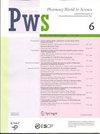SELECTIVE, BIONEUROPATHOGENETIC APPROACH TO THE CHOICE OF INTERVENTION IN VARIOUS CLINICAL AND ANATOMICAL FORMS OF SEVERE TRAUMATIC BRAIN INJURY
引用次数: 0
Abstract
The research has been based on surgical experience of multiple decades and on retrospect study of more that 4000 clinical cases, among them 3500 surgical invasion due to different types of traumas. Since it relies on the latter, it shows the evolution of our approaches towards severe cerebral cranial traumon includes different matters regarding diagnostics and surgical treatment with neuropathogenetic approach. We have shown the advantages of certain surgical procedures in cases of cerebral cranial trauma and also the way approaches were changing after introduction of high medical technology and taking into consideration bio mechanisms and pathological data. Computer diagnostics changed several surgical procedures and opportunities. In cases of traumas impacted in immobilized condition method of choice used to be plastic craniotomy, when in cases of cerebral congestion would cause decompression, placing bone fragment under the skin. 902 surgeries were performed among 1990. In 894 cases surgeries were performed using plastic trepanation, 217 among them was performed with improved modified method. In cases of negligible brain congestion, bone fragment was left in its place without suture fixation and after the congestion resolution fragment would return to its anatomical location. In several times it would be ligated in 2-3 points. This method was the most efficient in bi-frontal low craniotomy. The need of removing bone fragment was observed in zero cases. In cases of acceleration traumas, which is characterized by diffuse damage, multifocal hemorrhages and bruises, in 157 cases double decompression method was used, in some case with falcostomy, effective in 49 cases. Trafination and resection trepanation were removed from practice. Trafination method was sometimes use in cases of chronic hematomas and acute hydromas. In Recurrent and chronic hydromas method was less effective, in such conditions plastic trepanation method was used in order to create extra space for fluid. In singular cases of collapsed brain and for resolving tunica arachnoidea broken surface, we used to infuse 25-35 cubic oxygen or 20-25 distillate in spinal cord. This method was proved effective in 70 cases. Therefore, taking into consideration patho-mechanisms and pathology data, using differential pathogenetic methods of surgical invasion and computer monitoring of post-operative period we managed to decrease mortality in severecerebro-cranial traumas to 29-30% comparing to pre computer periods 36-38 % and comparing to data of other clinics 35-45%.选择性,生物神经病理学方法的选择干预各种临床和解剖形式的严重创伤性脑损伤
本研究基于数十年的手术经验和对4000多例临床病例的回顾性研究,其中3500例因不同类型的创伤而进行手术侵犯。由于它依赖于后者,它显示了我们对严重颅脑外伤的方法的演变,包括关于神经病理学方法的诊断和手术治疗的不同事项。我们已经展示了某些外科手术在颅脑损伤病例中的优势,并且在引入高医疗技术并考虑生物机制和病理数据后,方法正在发生变化。计算机诊断改变了一些外科手术的程序和机会。对于创伤在固定状态下冲击的病例,选择的方法过去是整形开颅,当出现脑充血时,将骨碎片置于皮肤下进行减压。1990年共施行手术902例。894例采用塑料钻孔手术,其中217例采用改良方法。对于轻微脑充血的病例,将骨碎片留在原处,无需缝线固定,在充血消退后,碎片将返回其解剖位置。几次会结扎2-3点。该方法在双额低位开颅中最有效。无一例需要切除骨碎片。对于以弥漫性损伤、多灶性出血和瘀伤为特征的加速损伤,157例采用双重减压法,部分病例联合造瘘,49例有效。在实践中取消了牵引和切除钻孔。慢性血肿和急性水肿有时采用引流法。在复发性和慢性积液方法效果较差的情况下,采用塑性钻孔法为积液创造额外的空间。在个别脑塌陷病例中,为了解决蛛网膜破裂表面,我们在脊髓中注入25-35立方氧或20-25蒸馏液。该方法对70例患者有效。因此,考虑到病理机制和病理资料,采用手术侵袭的鉴别病理方法和术后计算机监测,我们成功地将重型颅脑损伤的死亡率降低到29-30%,而计算机前的死亡率为36- 38%,与其他诊所的数据相比为35-45%。
本文章由计算机程序翻译,如有差异,请以英文原文为准。
求助全文
约1分钟内获得全文
求助全文

 求助内容:
求助内容: 应助结果提醒方式:
应助结果提醒方式:


